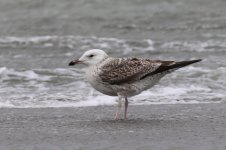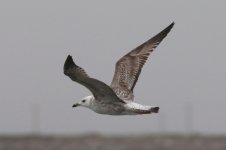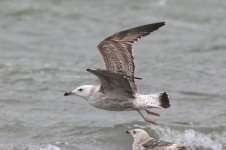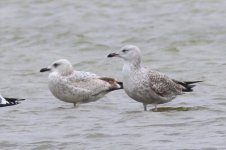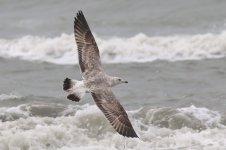Apologies if this is getting boring! This is the last one that's bothering me (for now at least).
I'm pretty sure this bird is just a very 'frosted-looking' first-winter taimyrensis due to fairly small (but still worryingly obvious) predominantly brownish-looking window on the inner primaries, dark outer greater coverts, well-patterned scapulars (with brown markings), and (perhaps most importantly) lack of obvious signs of wear throughout the upperwing coverts.
However, it does have one or two pro-mongolicus features, such as very white head and body, very white fringes to the upperwing coverts, subtly silvery-centred scapulars, and a narrow tail band.
I think Mongolian should look very bleached and worn through the wing by now, which is the main reason I do not prefer it. (Photo taken Feb 9 BTW.)
Confirmation or otherwise would once again be greatly appreciated!
Steve
I'm pretty sure this bird is just a very 'frosted-looking' first-winter taimyrensis due to fairly small (but still worryingly obvious) predominantly brownish-looking window on the inner primaries, dark outer greater coverts, well-patterned scapulars (with brown markings), and (perhaps most importantly) lack of obvious signs of wear throughout the upperwing coverts.
However, it does have one or two pro-mongolicus features, such as very white head and body, very white fringes to the upperwing coverts, subtly silvery-centred scapulars, and a narrow tail band.
I think Mongolian should look very bleached and worn through the wing by now, which is the main reason I do not prefer it. (Photo taken Feb 9 BTW.)
Confirmation or otherwise would once again be greatly appreciated!
Steve
Attachments
Last edited:




